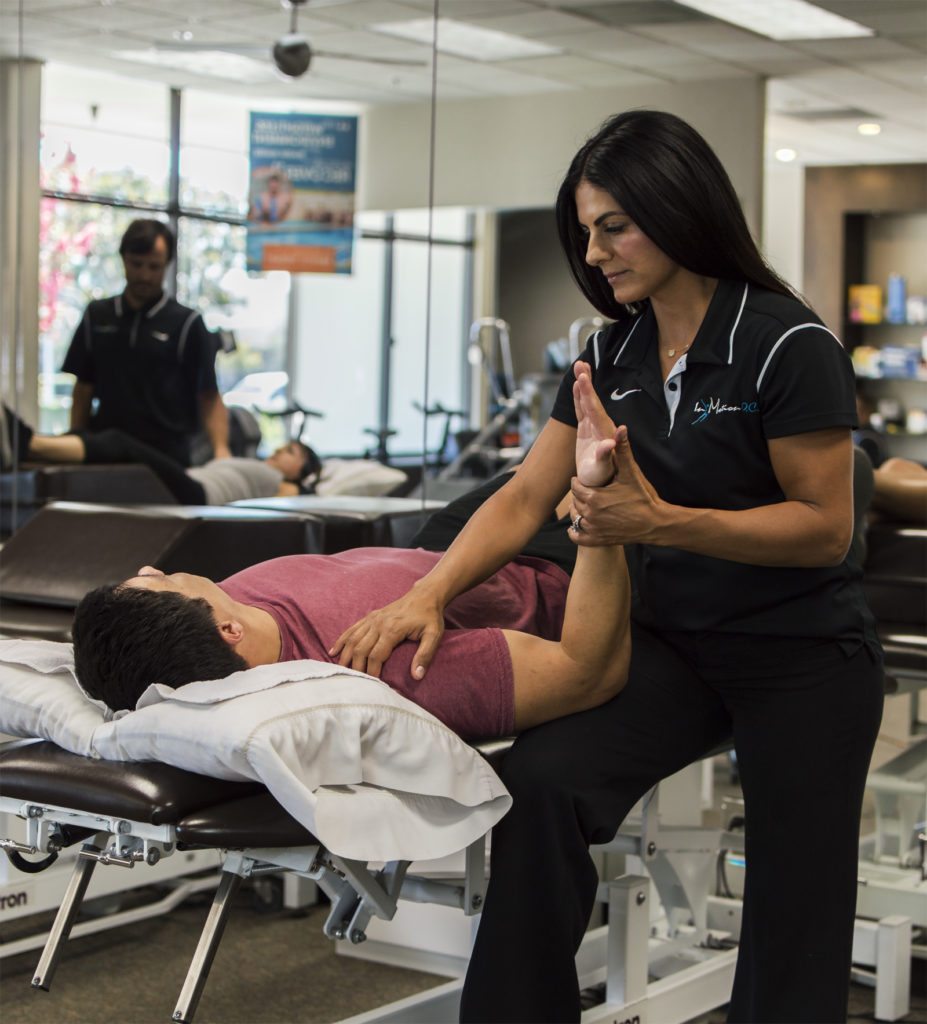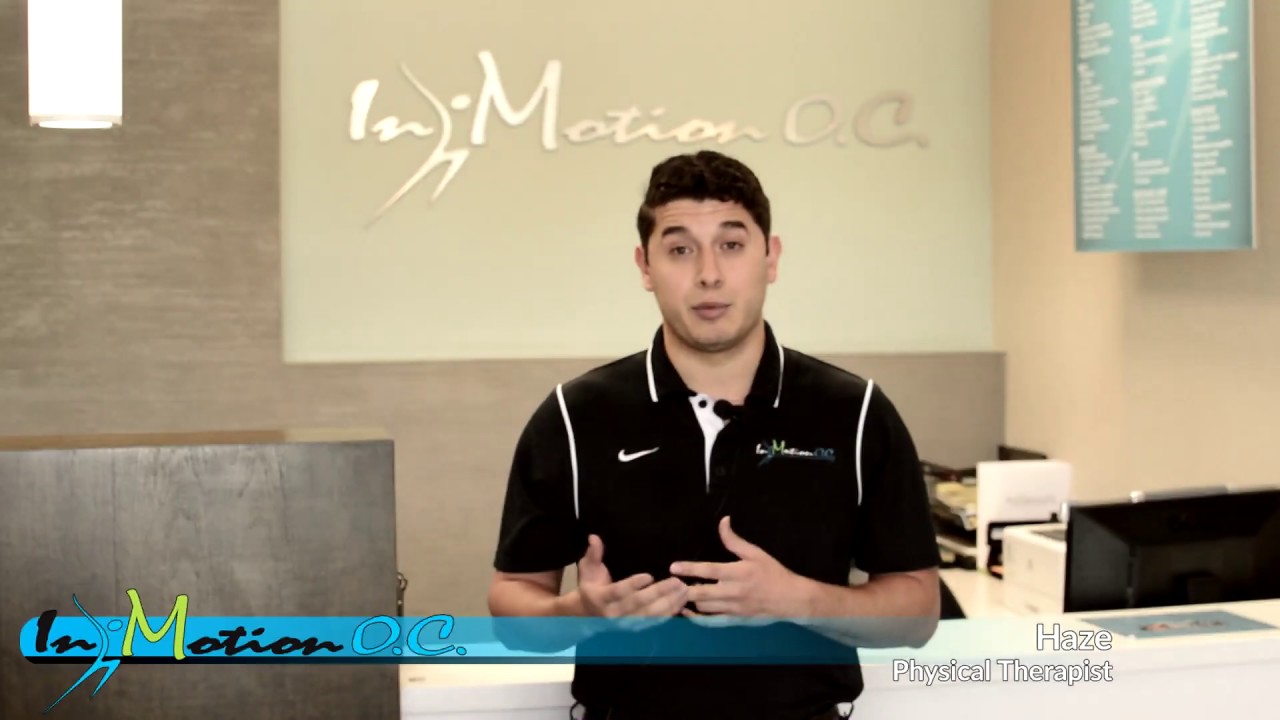Elbow
At In Motion O.C., we work with clients that have diverse lifestyles, and physical goals to accomplish. To make the most out of life, we have to start with our body and make sure it functions properly so that we can achieve those goals. When we’re overcome with pain, our focus becomes that pain instead of life’s possibilities. Limited mobility and weakness in our bones, ligaments and muscles can change our perspective on the things we’re willing to try in life or the confidence we have in ourselves to do more. Depending on what you do, your age and the current condition of your body, we can create a customized physical therapy and paired personal training plan for you. Realize your potential as you grow stronger and increase your range of motion with our physical therapy team.
Elbow Anatomy and Physiology
The bones that make up what we know as the elbow are the humerus, radius, and ulna; these bones create a hinge-like connection. The radius and ulna are the forearm bones that rotate over one another depending on the way we rotate the arm to position our hand palm up or down. Our humerus makes up the upper arm connected to the scapula (shoulder) bone. To understand the elbow, one must understand the connections between these bones and how they are interconnected with muscles, ligaments, as well as nerves and vasculature.

Ligaments offer Stability
Our humerus connects with the ulnar bone at the base called the trochlea covered by articular cartilage. The olecranon is the pointed part of the elbow we feel when we bend our arm at the joint; this clicks into the olecranon. Between these two bones, we have a synovial fluid-filled sac called a bursa that helps make movement in the elbow easier and fluid. Within this bone to bone connection, we have ligaments that stabilize the elbow structure called the lateral collateral and medial collateral ligaments; if we look at the elbow from the anterior (front facing side) these ligaments wrap around the epicondyles (or heads) of the humerus. We also have a radial annular ligament that wraps across the radial-ulna pair. Various ligaments support the elbow from unnatural movements such as over-flexion which isn’t permitted.
The muscles of the arms are flexors so the forearm can be pulled upward toward the body as we pick up items and move from side to side. These muscles are connected from the humerus down to the ulna and radius. Muscles involved in the movement of the elbow joint are the biceps brachii, brachioradialis, extensor carpi radialis longus and radialis. One of the important muscles we have in the elbow is the supinator muscle that wraps over the elbow in a lateral position. The muscle group that extends down from the medial epicondyle are the pronator teres, flexor carpi ulnaris, flexor carpi radialis, and the palmaris longus. Tendons here radiate out into the length of the hand. Laced throughout the upper arm, elbow, and forearm are three nerves–the medial, ulnar, and radial nerves.
What is elbow pain?
Pain in the arm, specifically within the elbow, is uncomfortable and can cause difficulty when we try performing tasks that require the upper arm and forearm, as well as the hand and wrist. Often pain in the elbow can be pressure discomfort as any issue with the joint or ligaments can push back or lock in place, making it difficult to extend the elbow. People that experience elbow pain understand that chronic inflammation and mild to severe pain sensations can occur. Issues with the radial nerve can be uncomfortable if the nerve is compressed or pinched creating numbness and tingling. Depending on the injury or condition within the elbow, or if the pain begins lower in the arm, wrist or hand, the elbow can suffer from referred pain as well.
Common causes of pain in the elbow
Olecranon Bursitis
At the elbow or olecranon, there is a sac of cartilage and fluid that protects the interior tendons and ligaments from tearing. This bursa can become inflamed and irritated with hyperactivity in the elbow. Continually injuring the elbow can cause the bursa to swell and cause pain.
Medial Epicondylitis (Golfer’s Elbow) and Lateral Epicondylitis (Tennis Elbow)
In Tennis Elbow, patients will feel pain on the outer portion of the forearm as these muscles become stressed or overextended. Golfer’s Elbow causes pain on the interior side of the forearm, making it difficult to move or use these muscles, to pull the arms up and down. The conditions refer mainly to the tendons at the tail end of our muscles as they attach to boney processes.
Dislocation or Fracture
Whenever we fall, the first thing we do is stick out our arm to break the fall. Injuries like this to the elbow often push the joint out of position or cause a fracture in the bones.
Arthritis
Aging causes inevitable wear and tear, but for some, weakness and poor flexibility in the muscles can cause early onset arthritis with symptoms of stiffening and feeling of grinding and resistance to movement.
Cubital Tunnel Syndrome
The cubital tunnel is an area on the inside of your elbow that is formed by your humerus and allows passage of the Ulnar nerve into the forearm compartment. In some individuals, whether due to overuse or anatomical differences, the nerve may be compressed and cause an inflammatory process that limits elbow mobility and can cause pain in the forearm and hand.

What can you do about your elbow pain?
Rest is the number one way to rule out any chronic or serious pain in the elbow. At In Motion O.C., we often recommend resting the elbow for two days and icing down any inflammation with cold compressions. Anti-inflammatory medications will help reduce pain and swelling of the elbow joint. In addition to these resting modalities, we suggest you exercise the joint and supporting muscles with these exercises we’ve provided below to repair, strengthen and stabilize the elbow.
*This information about physical therapy for elbow ailments was reviewed by Dr Natalie Thomas, PT, DPT. If you have any questions, please don’t hesitate to contact us here.


